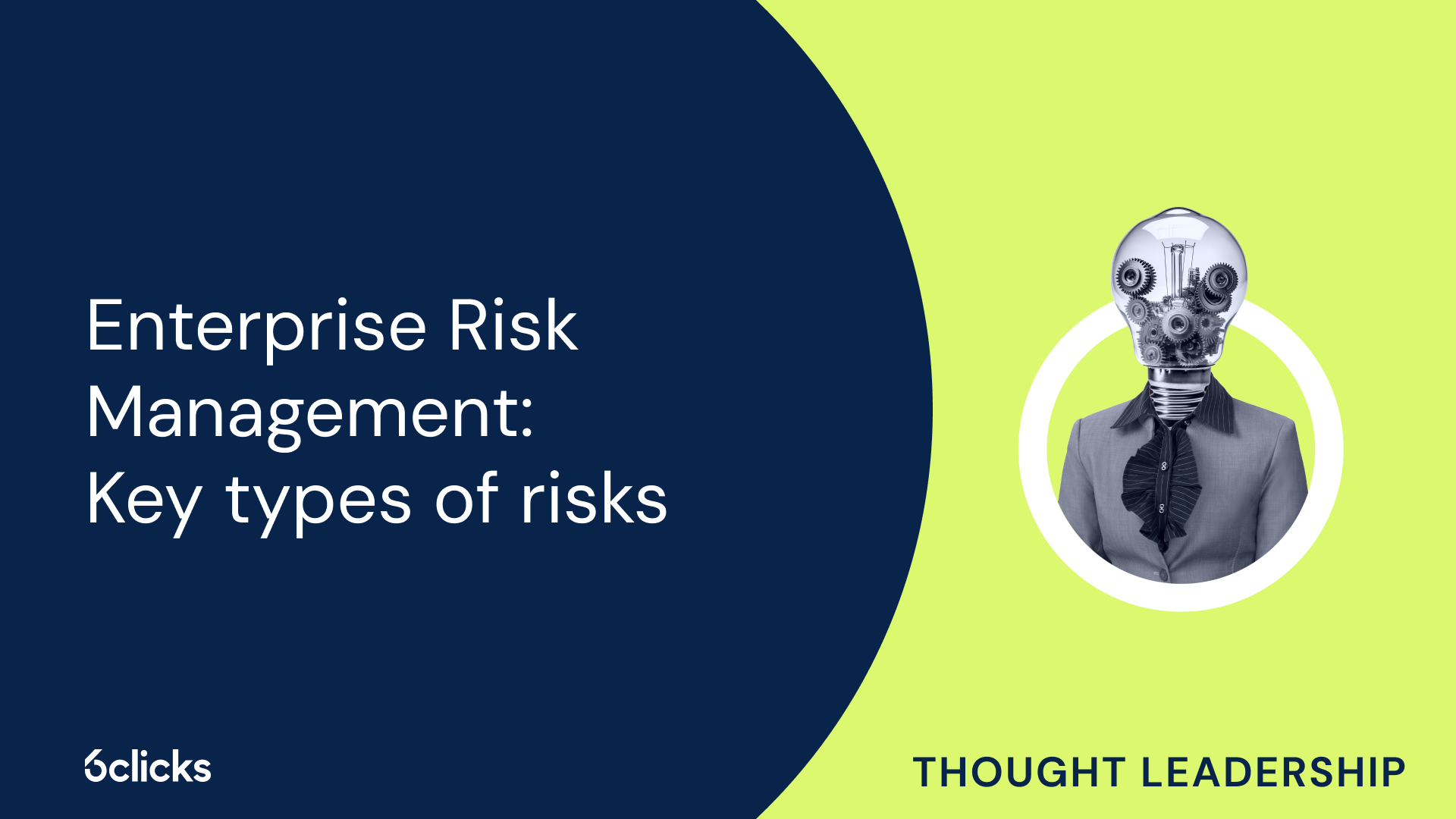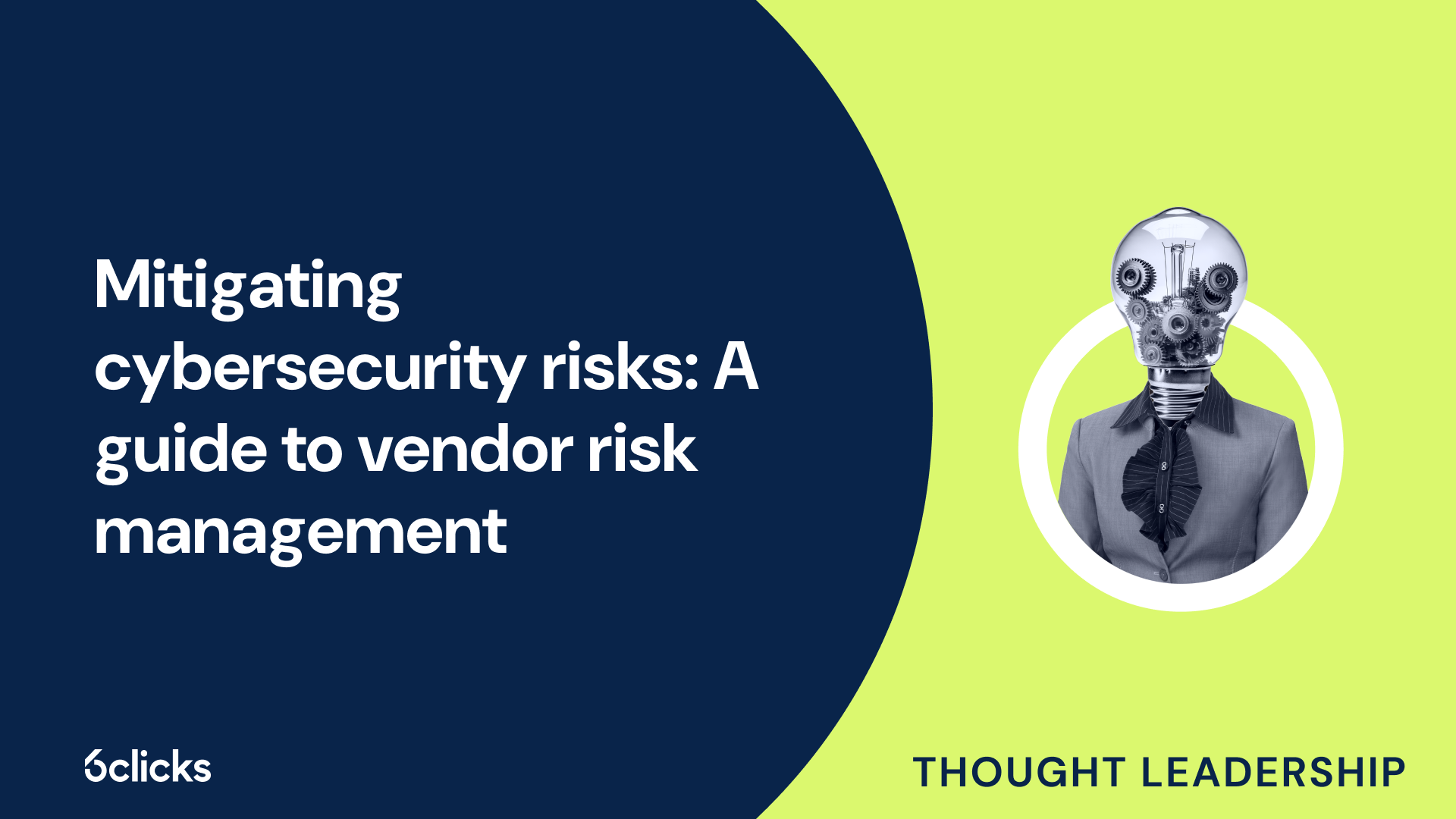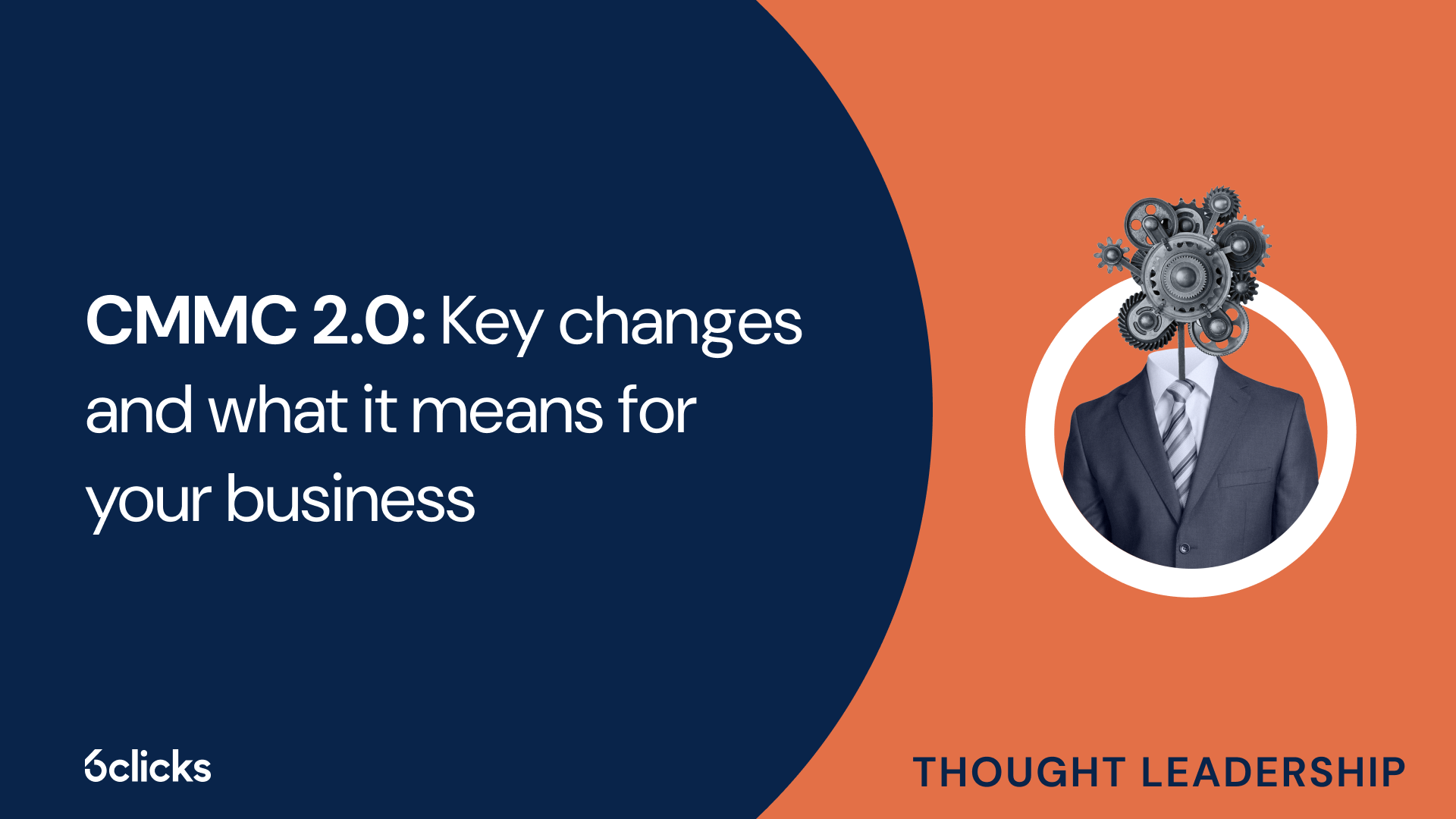What is meant by enterprise risk management (ERM)?
-1.png?width=314&height=391&name=Group%20193%20(1)-1.png)
What is meant by enterprise risk management (ERM)?
Definition of enterprise risk management
Enterprise Risk Management (ERM) refers to the process by which an organization identifies, assesses, and manages potential risks and events that could impact its ability to achieve its business objectives. It is a strategic and proactive approach to risk management that encompasses all levels of an organization and is integrated into its day-to-day operations. ERM involves the identification and assessment of various types of risks, such as operational, strategic, financial, and hazard risks, both internal and external to the organization. Through the establishment of an enterprise risk management framework and the implementation of risk management processes, ERM aims to mitigate and respond to risks effectively. It involves the participation and collaboration of various stakeholders, including the board of directors, senior management, and the chief risk officer. ERM is an ongoing process that helps organizations understand their risk profiles, define risk tolerances and risk appetites, and develop risk management strategies and risk response strategies that align with their business strategies and objectives. By implementing and maintaining an effective enterprise risk management solution, organizations can proactively manage and reduce the impact of risks on their entire organization.
Benefits of implementing ERM
Enterprise Risk Management (ERM) refers to the systematic approach of identifying, assessing, and managing risks in order to achieve strategic objectives and enhance overall organizational performance. Implementing an ERM framework provides numerous benefits for organizations.
Firstly, ERM enhances awareness of risks across the entire organization. By systematically identifying and assessing risks, organizations gain a deeper understanding of potential risks and events that could impact their business objectives. This awareness allows them to proactively monitor and manage risks, thereby reducing the likelihood of unexpected negative outcomes.
Secondly, ERM improves confidence in achieving strategic objectives. By integrating risk management processes into strategy setting, organizations can identify and evaluate risks that might hinder their objectives. This allows for risk response strategies to be developed, ensuring that potential risks are considered and mitigated, thus providing greater confidence in achieving strategic goals.
Additionally, implementing ERM improves compliance with legal and regulatory requirements. By identifying potential compliance risks and establishing appropriate risk response strategies, organizations can ensure that they meet their legal and regulatory obligations, reducing the risk of penalties, fines, and reputational damage.
Furthermore, ERM increases operational efficiency and effectiveness. By optimizing risk management efforts, organizations can allocate resources more effectively and efficiently, leading to improved decision-making and operational processes. ERM allows for a more proactive approach to risk management, resulting in a streamlined and integrated approach across the organization.
Components of ERM
Enterprise Risk Management (ERM) is composed of various components that work together to effectively identify, assess, and manage risks within an organization. These components include risk identification, risk assessment, risk response, ongoing monitoring, and communication.
Risk identification involves the systematic identification and evaluation of potential risks that could impact an organization's objectives. This process helps organizations understand their risk profile and develop strategies to address these risks.
Risk assessment involves analyzing and prioritizing risks based on their potential impact and likelihood of occurrence. This allows organizations to focus their resources on managing the most critical risks.
Risk response strategies are developed to address identified risks. These strategies could include risk avoidance, risk mitigation, risk transfer, or risk acceptance. The chosen response strategy depends on the organization's risk appetite and tolerance levels.
Ongoing monitoring is crucial to ensure that risk management efforts are effective. Organizations need to regularly assess and update their risk profiles, review risk responses, and monitor changes in the business environment to adapt their risk management strategies accordingly.
Communication is vital for an effective ERM process. It involves sharing risk information across the organization, ensuring that key stakeholders are aware of the identified risks and the actions taken to manage them. Effective communication enables informed decision-making and promotes a risk-aware culture throughout the organization.
By implementing these components of ERM, organizations can enhance their risk management capabilities and effectively navigate the ever-changing business landscape.
Risk identification and assessment
Risk identification and assessment are key components of the enterprise risk management (ERM) process. The identification of potential risks is crucial in order to effectively manage them and minimize their impact on an organization's objectives.
Risk identification involves systematically identifying and evaluating potential risks that may arise from both external and internal factors. External factors include changes in the business environment, market conditions, regulatory requirements, and industry trends. Internal factors may include operational processes, technology, human resources, financial resources, and strategic decisions.
One tool commonly used in the risk identification process is a SWOT analysis. SWOT stands for strengths, weaknesses, opportunities, and threats. It helps in categorizing and analyzing potential risks by considering both internal strengths and weaknesses of the organization, as well as external opportunities and threats.
After risks have been identified, the next step is risk assessment. This involves analyzing and prioritizing risks based on their potential impact and likelihood of occurrence. This allows organizations to allocate their resources effectively and focus on managing the most critical risks. Risk assessment typically utilizes risk matrices or scoring systems to quantify and prioritize risks.
By effectively identifying and assessing risks, organizations can develop appropriate risk response strategies and implement proactive measures to mitigate potential harm. It is an ongoing process that requires regular monitoring and updating as the business environment evolves.
Risk appetite and tolerance
Risk appetite and tolerance play a crucial role in enterprise risk management (ERM) by defining an organization's willingness to accept and manage different types of risks.
Risk appetite is the amount of risk an organization is willing to take on in pursuit of its business objectives. It reflects the organization's risk mindset and its willingness to tolerate potential losses in order to achieve its strategic goals. Risk tolerance, on the other hand, refers to the level of risk an organization can withstand without jeopardizing its financial stability or reputation. It represents the organization's ability to absorb and manage the impact of potential risks.
In the context of ERM, risk appetite and tolerance are closely related to the types of risks identified, such as financial risks, strategic risks, and operational risks. For instance, an organization with a high risk appetite may be more willing to engage in risky financial investments to achieve higher returns, while an organization with a low risk appetite may prefer more conservative investment strategies. Similarly, strategic risks, such as entering new markets or launching new products, may have different risk tolerances based on the organization's risk appetite and capacity to absorb potential losses.
Several factors determine an organization's risk tolerance, including its financial strength, its industry and competitive landscape, regulatory requirements, risk management processes, and stakeholder expectations. These factors influence the organization's ability to absorb and recover from potential risks.
Establishing clear risk appetite and tolerance levels is essential for effective risk management. It helps organizations align their risk-taking activities with their overall business objectives, ensuring that risk management efforts are focused and appropriate. By defining risk appetite and tolerance, organizations can make informed decisions about risk responses, implement risk management strategies, and allocate resources effectively to mitigate potential risks. Ultimately, it enables organizations to proactively manage risks while maximizing opportunities for success.
Risk response strategies
Risk response strategies are an essential component of the enterprise risk management (ERM) process. These strategies help organizations effectively manage and mitigate identified risks. There are several risk response strategies that organizations can employ to address risks:
- Risk Mitigation: This strategy involves taking actions to reduce the likelihood or impact of a risk. Organizations can implement controls, such as establishing policies and procedures, conducting staff training, or implementing technology solutions, to minimize the risk.
- Risk Avoidance: In some cases, organizations may choose to eliminate the risk altogether by avoiding activities or situations associated with the risk. This strategy may involve not pursuing certain business ventures or projects that carry significant risks.
- Risk Transfer: Organizations can transfer risks to another party, such as through insurance policies or contractual agreements. By transferring risks, organizations shift the financial burden and liability associated with the risk to another entity.
- Risk Acceptance: Sometimes, organizations may choose to accept certain risks if the cost or effort to mitigate them outweighs the potential impact. This strategy involves acknowledging the risk and making a conscious decision to absorb any potential losses.
An example of risk transfer as a risk response strategy is Airbus transferring its research and development (R&D) operations to other countries. By doing so, Airbus mitigates risks associated with geopolitical instability, regulatory changes, or talent shortages in a particular location. This strategy allows Airbus to diversify its R&D activities, tap into different markets, and leverage local expertise while minimizing potential risks.
Key risk indicators (KRIs)
Key risk indicators (KRIs) play a crucial role in enterprise risk management (ERM) by providing organizations with valuable insights into their top risks. KRIs are specific metrics or data points that help organizations monitor and track these risks over time.
KRIs are designed to provide early warning signals and allow organizations to take timely and proactive measures to address potential threats. By regularly monitoring KRIs, organizations can gain a better understanding of their risk profile and make informed decisions to protect their business objectives.
Developing effective KRIs involves a careful and systematic process. Firstly, organizations need to identify their key risks through a comprehensive risk assessment. This involves identifying potential events or circumstances that could impact the achievement of business objectives.
Once the risks are identified, organizations need to determine the key aspects or indicators that can provide insights into the occurrence or severity of these risks. KRIs should be aligned with the organization's strategic objectives and reflect the specific risks it faces. For example, a financial institution may track metrics such as liquidity ratios or credit risk indicators as KRIs.
In addition, KRIs should be measurable, objective, and capable of providing meaningful information. They should be actionable and allow organizations to take appropriate risk responses. Regular review and evaluation of the relevance and effectiveness of KRIs are also crucial to ensure they remain aligned with the evolving business environment.
By developing and utilizing effective KRIs, organizations can enhance their risk management efforts and make more informed decisions to mitigate potential risks. It allows them to stay ahead of emerging risks, anticipate potential threats, and ensure the achievement of their business objectives in an uncertain and dynamic business landscape.
Continuous monitoring and reporting
Continuous monitoring and reporting play a crucial role in effective enterprise risk management (ERM). This ongoing process allows organizations to stay informed about potential risks and take timely actions to mitigate them. By continuously monitoring key risk indicators (KRIs) and reporting on their findings, companies can proactively manage risks and protect their business objectives.
One of the main advantages of continuous monitoring is the ability to ensure that companies stay within their risk appetite. Risk appetite refers to the level of risk a company is willing to accept to achieve its objectives. Through ongoing monitoring, organizations can regularly assess and evaluate risk exposures to determine if they are within acceptable limits. This helps prevent the organization from taking on excessive risks or becoming too risk-averse, which can impede growth and innovation.
Continuous monitoring also helps companies comply with regulatory policies. Many industries are subject to regulation and oversight, and organizations must demonstrate that they have effective risk management processes in place. By continuously monitoring and reporting on risks, companies can provide evidence of their compliance efforts and address any control gaps or deficiencies promptly.
While continuous monitoring is essential, periodic monitoring through internal audits is equally important. Internal audits provide an independent and objective assessment of the effectiveness of risk management processes and controls. Collaboration between the risk management unit and internal audit department ensures that risks are continually evaluated and that any issues or concerns are promptly addressed.
Integration with business objectives
Enterprise risk management (ERM) is a comprehensive approach that integrates risk management principles and practices throughout an organization to effectively identify, assess, monitor, and respond to risks that may impact the achievement of business objectives. By aligning ERM with business objectives, organizations can ensure that risk management efforts are directly linked to the overall success of the company.
ERM helps organizations set worthy business and strategic objectives by considering the organization's risk appetite level. Risk appetite refers to the amount and type of risk an organization is willing to accept in pursuit of its objectives. By understanding their risk appetite, organizations can establish clear and achievable objectives that are in line with an acceptable level of risk. This alignment ensures that the organization sets realistic goals while still being proactive in managing potential risks.
Additionally, ERM aids in monitoring and reducing both internal and external risks. Ongoing monitoring of risks allows organizations to stay informed and updated about potential threats. This helps them anticipate, detect, and respond to change, ensuring that any emerging risks are promptly addressed. By continuously assessing and evaluating risks, organizations can implement risk reduction measures and develop appropriate risk response strategies to mitigate the impact of potential risks.
Governance structure for ERM
The governance structure for enterprise risk management (ERM) involves a collaborative effort between executive management and the board of directors to ensure effective risk oversight and management within an organization.
Executive management, including senior management and key decision-makers, play a critical role in setting the tone and leadership for ERM. They are responsible for designing and implementing the ERM process, which includes establishing risk management policies, procedures, and systems. They are also tasked with identifying and assessing potential risks, as well as developing risk response strategies to mitigate their impact.
On the other hand, the board of directors provides risk oversight by actively monitoring and reviewing the organization's risk management efforts. They are responsible for setting the risk appetite, approving risk management policies, and ensuring that ERM aligns with the organization's strategic objectives. The board also plays a crucial role in overseeing the effectiveness of the ERM framework and its integration into the overall governance structure.
The collaboration between executive management and the board of directors is essential in enhancing the entity's strategic value. By working together, they can ensure that ERM is integrated throughout the organization, from day-to-day operations to strategy setting. This collaboration helps in identifying and managing risks that could impact the achievement of strategic objectives, thereby safeguarding the organization's reputation, financial stability, and long-term success.
Senior management’s role in ERM
Senior management plays a pivotal role in enterprise risk management (ERM) by providing the leadership and direction needed to effectively manage risks throughout the organization. They are responsible for designing and implementing the ERM process, which involves establishing risk management policies, procedures, and systems. Senior management is also tasked with identifying and assessing potential risks that may impact the organization's objectives and day-to-day operations. They collaborate with key decision-makers to develop risk response strategies that aim to mitigate the impact of risk and align with the organization's overall strategy. By setting the tone and example for ERM, senior management ensures that risk management efforts are integrated into the organization's culture and decision-making processes. Their active involvement in ERM promotes a proactive approach to risk management, facilitates informed decision-making, and enhances the organization's ability to navigate an ever-changing business environment.
The chief risk officer (CRO) position
The chief risk officer (CRO) position plays a critical role within the enterprise risk management (ERM) framework. As an executive-level position, the CRO is responsible for overseeing and managing an organization's risk governance and risk management efforts.
One of the main responsibilities of the CRO is to establish and maintain an enterprise risk management framework. This involves developing and implementing risk management processes and strategies to identify, assess, and mitigate potential risks across the entire organization. The CRO works closely with the board of directors, senior management, and business units to align risk management efforts with business objectives and strategic initiatives.
In addition to risk governance and management, the CRO is also responsible for developing risk response strategies. By analyzing the impact of risk exposures and understanding the organization's risk tolerances and appetite, the CRO determines appropriate risk responses such as risk reduction, risk avoidance, risk transfer, or risk acceptance.
Furthermore, the CRO plays a crucial role in reporting on the effectiveness of risk responses. This involves monitoring and evaluating the implementation of risk response strategies and assessing their outcomes. By providing regular reports to the board of directors and senior management, the CRO ensures transparency and accountability in the organization's risk management efforts.
To be qualified for the CRO position, individuals should possess a strong background in risk management, finance, and have a deep understanding of the organization's industry and business environment. Effective enterprise risk management requires an individual who can navigate complex risk landscapes, make informed decisions, and communicate effectively with stakeholders at all levels of the organization.
Board of directors’ role in ERM
The board of directors plays a crucial role in enterprise risk management (ERM) by providing risk oversight and ensuring alignment with stakeholders' risk appetite. They have the responsibility of understanding and approving management's ERM process, as well as overseeing the risks identified by the ERM process.
Risk oversight involves the board's active participation in reviewing and monitoring the organization's risk management activities. By having a comprehensive understanding of the risks the organization faces, the board can effectively assess their potential impact on the achievement of strategic objectives. This oversight responsibility also includes evaluating the effectiveness of the ERM process, identifying any gaps or deficiencies, and ensuring that appropriate risk response strategies are in place.
The board's involvement in ERM enhances the entity's strategic value by providing guidance and support in the development and implementation of risk management strategies. By actively engaging in risk oversight, the board ensures that risks are understood and managed effectively, which in turn helps safeguard the organization's reputation, financial stability, and long-term success.
In addition, the board's oversight of the ERM process also enhances transparency and accountability. By regularly monitoring and assessing the risks identified by the ERM process, the board can provide stakeholders with confidence that risk management efforts are aligned with the organization's goals and objectives.
Traditional vs. enterprise risk management
Traditional risk management refers to the traditional approach of managing risks within an organization, where risks are typically handled in silos and on an individual basis. This approach often leads to fragmented and reactive risk management efforts, which may not effectively address the interconnected and complex nature of risks faced by organizations today. On the other hand, enterprise risk management (ERM) is a comprehensive and integrated approach to managing risks across the entire organization. ERM considers all types of risks – including operational, strategic, and financial – and aims to proactively identify, assess, and respond to potential risks and events that may impact the achievement of business objectives. By taking a holistic view of risks, ERM enables organizations to implement robust risk management processes and strategies to better protect and enhance their overall performance and success.
Differences between TRM and ERM
Traditional risk management (TRM) and enterprise risk management (ERM) are two approaches that organizations use to manage risks. While both approaches share the goal of identifying and mitigating risks, there are key differences between them.
- Scope: TRM focuses on managing risks within specific business units or departments. It typically involves assessing and addressing risks that directly impact day-to-day operations and cash flow. ERM, on the other hand, takes a broader approach by encompassing risk management across the entire organization. It looks at risks that have the potential to impact the organization as a whole, including strategic risks, operational risks, financial risks, and even external risks.
- Integration: TRM is often viewed as a separate function within the organization, with risk management processes existing independent of other business processes. ERM, on the other hand, integrates risk management with business objectives and strategy setting. It recognizes that managing risks effectively is essential for achieving organizational goals and aligning risk management efforts with the overall strategy of the organization.
- Governance: TRM is typically the responsibility of individual business units or departments. It is often overseen by department heads or managers who are accountable for managing risks within their respective areas. ERM, however, involves the participation of the entire organization, from the board of directors to senior management. ERM encourages a top-down approach to risk management, ensuring that risk management processes align with corporate culture, corporate governance, and the overall risk appetite of the organization.







